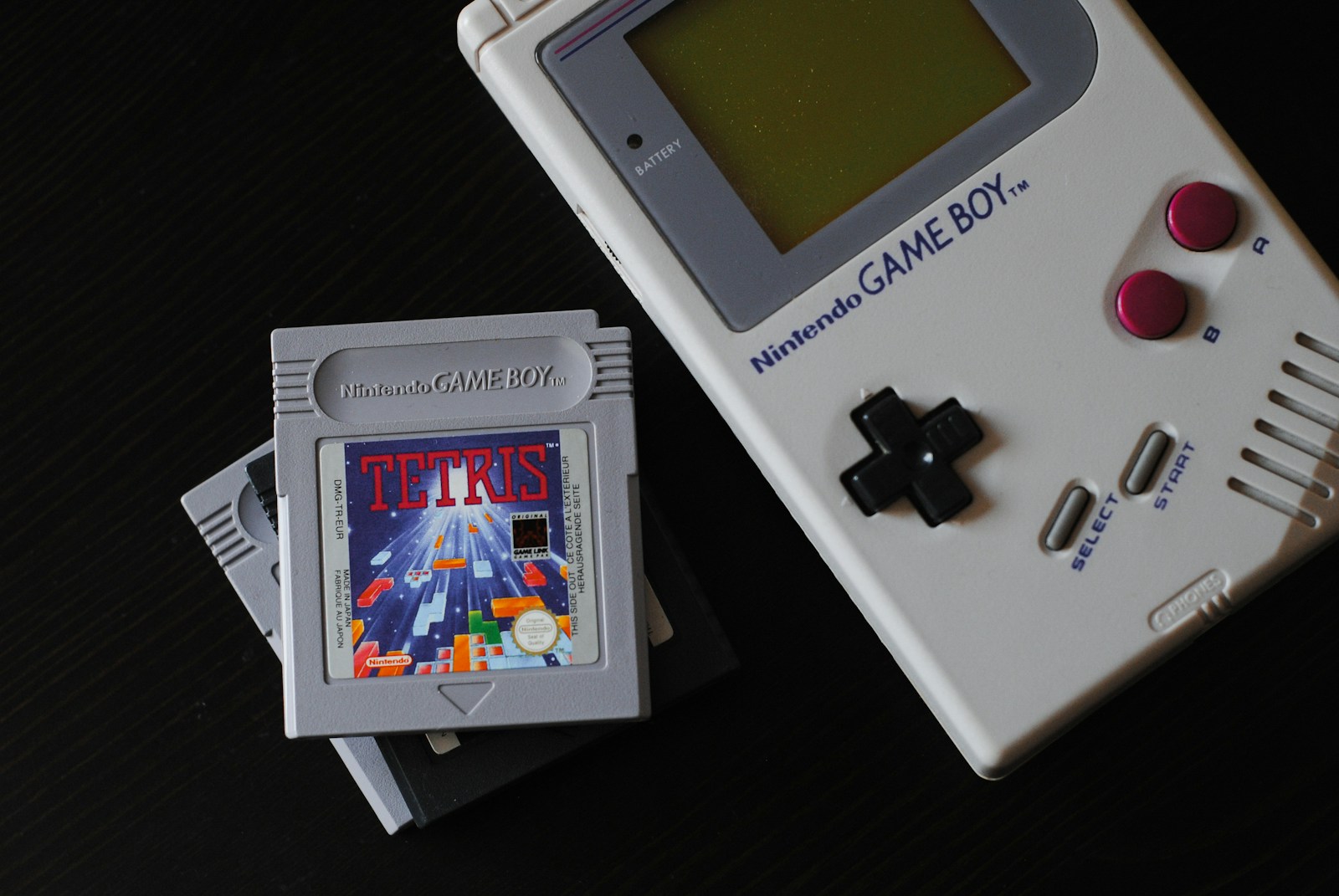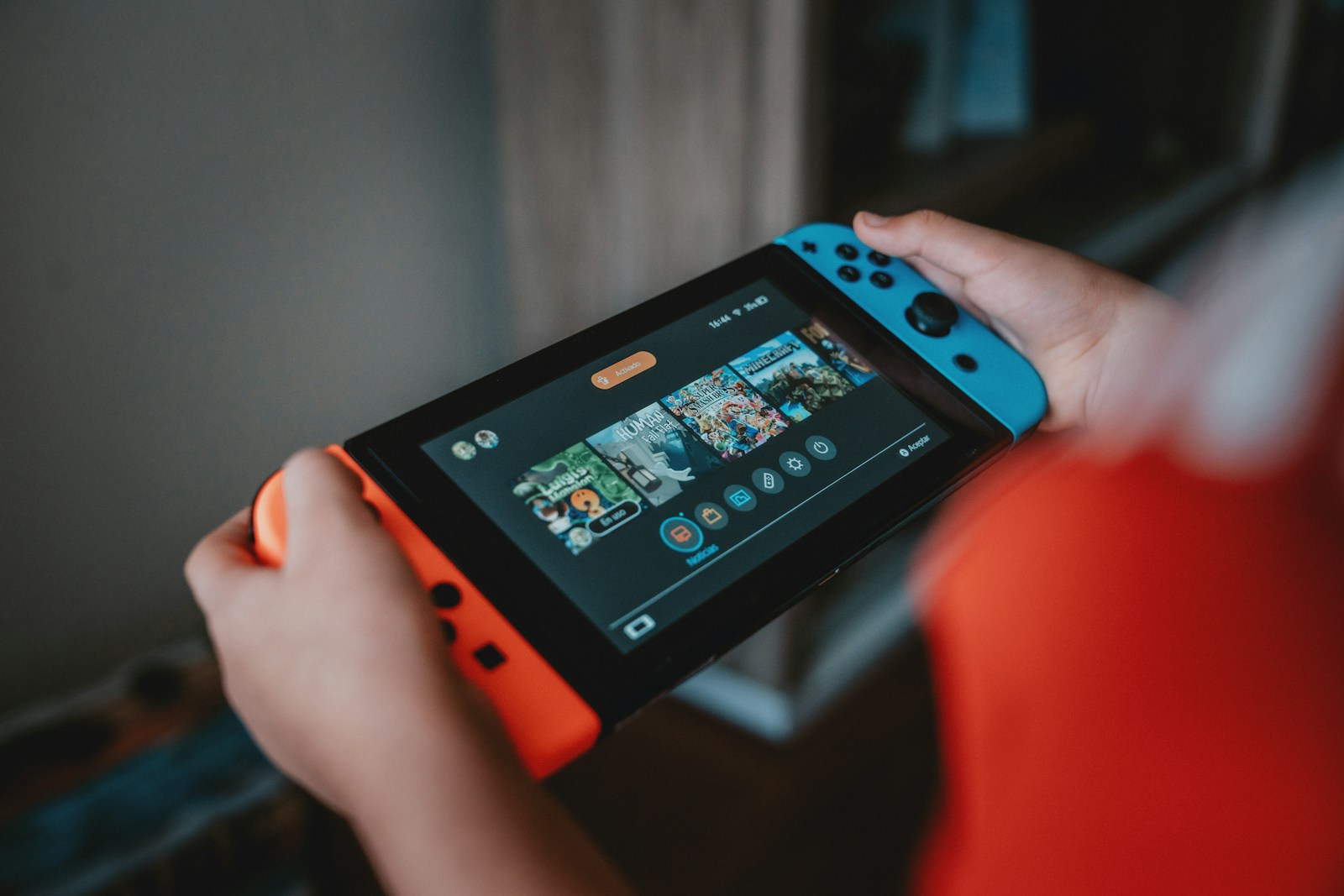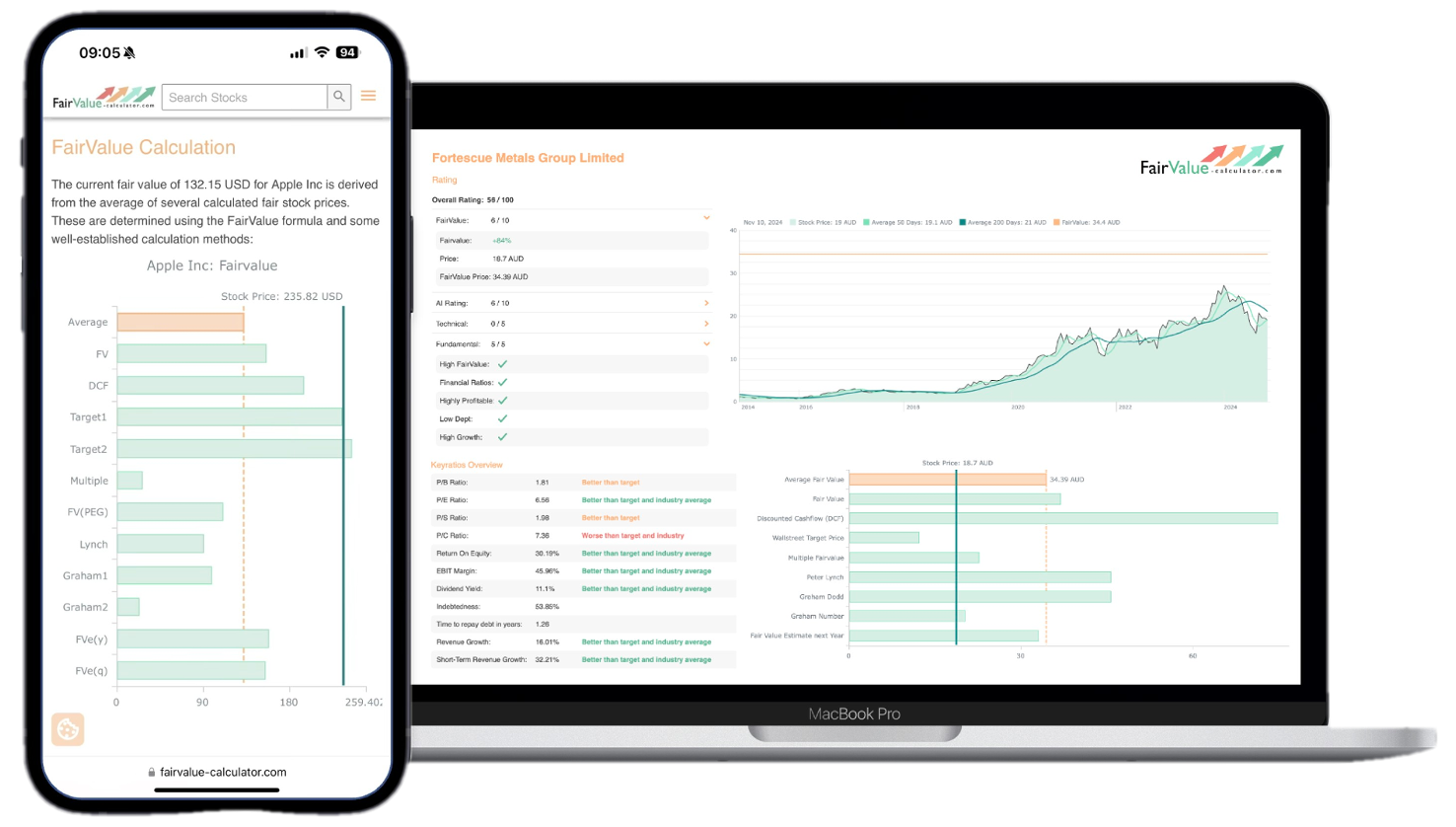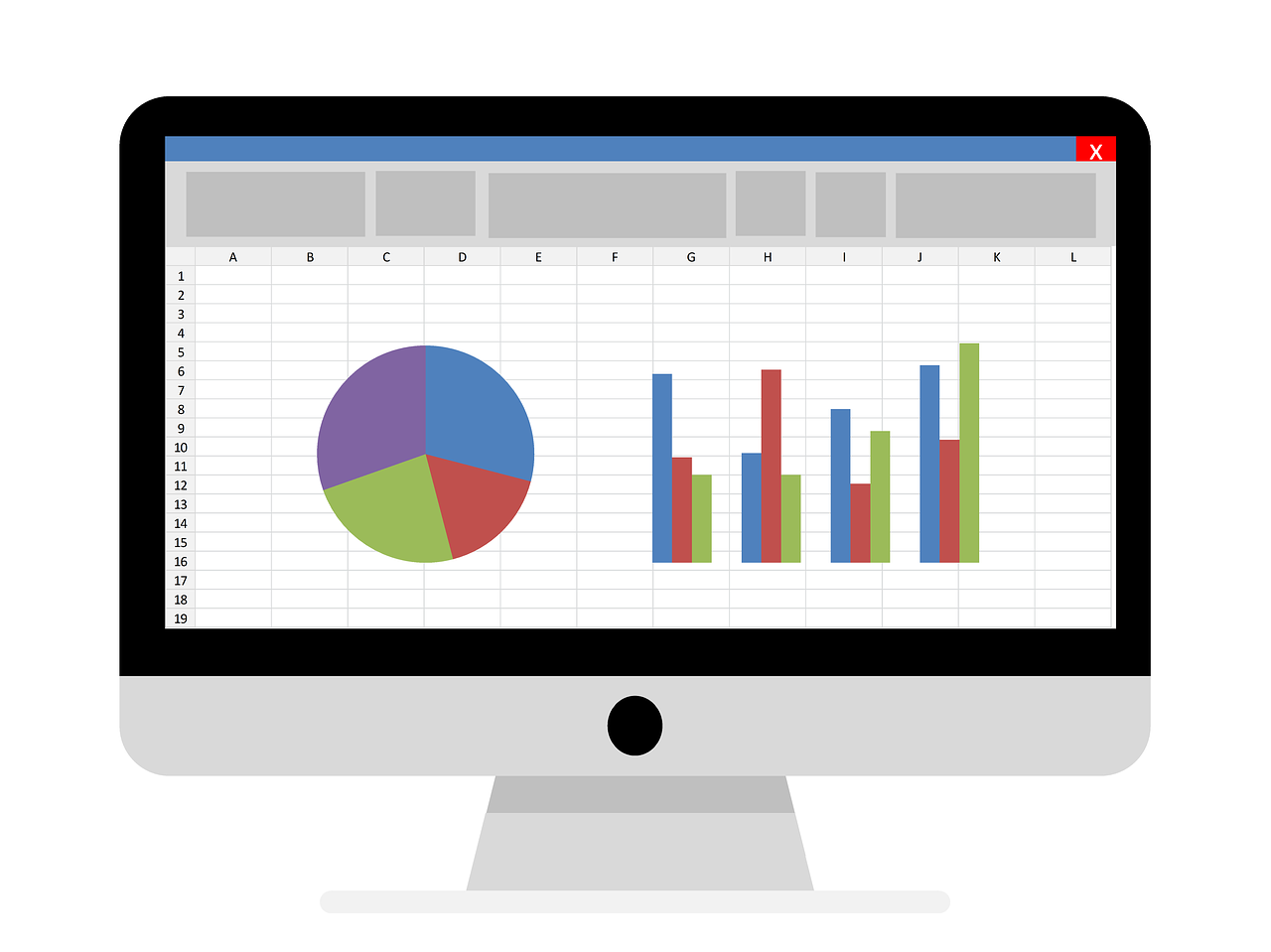In an era where meme stocks seem to dance at the whims of social media chatter, the financial landscape is anything but predictable. Yet amidst this roller-coaster ride, long-term investors need more than just a viral tweet to make informed decisions. Enter the curious case of Gamestop, a company that has been the poster child for meme stock mania, now trading at $22 despite its fair value being pegged at $12 by the Super Fair Value v4 model. This represents an overvaluation of a staggering 83%, prompting seasoned investors to pause and ponder: is this a bubble waiting to burst or an opportunity in disguise?
Alongside Gamestop’s tumultuous journey, we find Nintendo—steadily riding a wave of success with its latest console launch, the Switch 2. With over 2 million pre-orders adding to its credibility, Nintendo’s stock sits at $21, while its intrinsic fair value suggests it should be closer to $13, making it overvalued by 62%. As intriguing as these numbers are, they serve as a stark reminder that not everything is as it seems in the world of stock valuation. For those eager to decipher the math behind these figures without getting tangled in complex spreadsheets, the Fairvalue Calculator offers a simple yet powerful solution. Join us as we delve deeper into the implications of these valuations for long-term investors eyeing the future beyond the meme stock hysteria.
💡 Discover Powerful Investing Tools
Stop guessing – start investing with confidence. Our Fair Value Stock Calculators help you uncover hidden value in stocks using time-tested methods like Discounted Cash Flow (DCF), Benjamin Graham’s valuation principles, Peter Lynch’s PEG ratio, and our own AI-powered Super Fair Value formula. Designed for clarity, speed, and precision, these tools turn complex valuation models into simple, actionable insights – even for beginners.
Learn More About the Tools →Why is GameStop so bad when it comes to returning or selling things to them How come they never do a reasonable price offer to people selling them their stuff?
GameStop’s trade-in offers have long been a sore spot for both casual gamers and dedicated collectors. At the core of the issue is a business model geared toward maximizing retail margins rather than delivering top dollar back to customers. When a consumer brings in a used game or console, GameStop must factor in shipping, refurbishment, overhead, and desired profit, which invariably leads to lower trade-in credit. This approach ensures the retailer can resell the item at a markup and cover operational costs, but it leaves sellers feeling short-changed.
Moreover, GameStop frequently leverages promotions, “20% extra credit” or “double trade-in value”, to encourage impulse trades, yet the base prices remain low. The company argues that its model benefits customers who then use credit toward new purchases. However, value investors and long-term gamers often balk at the disparity between third-party resale values (on eBay or local buy-sell groups) and the offers they receive in-store. Until GameStop shifts to a more customer-centric buyback policy or reduces its refurbishment overhead, reasonable trade-in offers will remain elusive.
🚀 Test the Fair Value Calculator Now!
Find out in seconds whether your stock is truly undervalued or overpriced – based on fundamentals and future growth.
Try it for Free →How is it that GameStop hasn’t gone the way of Blockbuster video yet Why get in my car and drive to buy a game when I can buy it digitally and instantly without even having to get up from my couch?
In the age of digital distribution, GameStop might seem outdated—much like Blockbuster once was. Yet the retailer endures thanks to a few strategic pivots. First, GameStop has expanded into collectibles, apparel, and digital gift cards, diversifying its revenue streams beyond physical media. Second, many gamers still crave hands-on experiences: trying limited editions, trading in old stock, or picking up pre-orders.”
Additionally, GameStop’s stores act as local hubs for community events, tournaments, and in-person technical support. While digital purchases deliver instant access, they lack the tactile thrill of unboxing a collector’s edition or the satisfaction of trading in an old title for credit. That said, the foot-traffic model is under pressure. As digital and mobile commerce continue to grow, GameStop must keep innovating, perhaps by enhancing its online marketplace integration or offering unique in-store experiences, to avoid following Blockbuster into obsolescence.
Explore our most popular stock fair value calculators to find opportunities where the market price is lower than the true value.
- Peter Lynch Fair Value – Combines growth with valuation using the PEG ratio. A favorite among growth investors.
- Buffett Intrinsic Value Calculator – Based on Warren Buffett’s long-term DCF approach to determine business value.
- Buffett Fair Value Model – Simplified version of his logic with margin of safety baked in.
- Graham & Dodd Fair Value – Uses conservative earnings-based valuation from classic value investing theory.
- Intrinsic vs. Extrinsic Value – Learn the core difference between what a company’s really worth and what others pay.
- Intrinsic Value Calculator – A general tool to estimate the true value of a stock, based on earnings potential.
- Fama-French Model – For advanced users: Quantifies expected return using size, value and market risk.
- Discount Rate Calculator – Helps estimate the proper rate to use in any DCF-based valuation model.
What does GameStop do with your old games and consoles when you trade them in for something new Do they destroy them sell them as used give them away on eBay or something like that etc?
When you trade in a game or console at GameStop, it doesn’t end up in the shredder. Instead, the retailer evaluates each item’s condition and functionality. Those that pass quality control are refurbished, cleaned, tested, and repackaged, for resale as “pre-owned” inventory in stores and on GameStop’s online marketplace. Items that fail inspection may be sold wholesale to third-party liquidators or recycled for parts.
GameStop has also experimented with eBay listings for overflow inventory, allowing some rare or high-demand items to find new homes at better prices. In rare cases where refurbishment isn’t cost-effective, components may be harvested, memory modules, controllers, or power supplies recycled into new repair kits. This multi-channel approach helps GameStop recapture value from trade-ins while minimizing waste.
What is the future of Gamestop Will they go out of business due to their stock crashing down or will it bounce back eventually?
Gamestop’s future hinges on its ability to reinvent itself in a digital-first marketplace. The stock’s recent crash from meme-driven highs has exposed underlying weaknesses: heavy reliance on brick-and-mortar revenue, slow e-commerce integration, and a legacy inventory structure. However, the management team has laid out a multi-year turnaround plan focused on digital services, loyalty-based subscription models, and partnerships with indie developers for exclusive releases.
If GameStop can successfully transition to a hybrid retail model, blending physical stores with a robust online platform, there’s potential for a bounce-back. Key catalysts include launching a unified marketplace (new and used) with seamless trade-in, enhancing the PowerUp Rewards program, and capitalizing on collectible demand. Still, investors must remain cautious. Until consistent digital revenue growth offsets the decline in physical sales, the risk of further stock price erosion remains high.
Understanding Gamestop’s Stock Valuation
Valuing Gamestop in August 2025 requires stripping away the meme-stock froth and focusing on fundamentals. At $22 per share, GME trades well above its Super Fair Value v4 estimate of $12, implying an 83% overvaluation. The model weighs cash flows from retail operations, expected digital revenue growth, and net working capital requirements. While foot-traffic revenues are declining at a mid-single‐digit rate, digital and collectibles could stabilize overall cash flows in the coming years.
It’s crucial to differentiate between headline volatility and intrinsic value. Short-term social media surges can drive prices north, but they rarely reflect sustainable profitability. By applying a discounted cash flow framework, which the Fairvalue Calculator automates, investors can see why GME’s current market price diverges so sharply from its underlying worth.
Factors Influencing Gamestop’s Overvaluation
Several elements have conspired to push Gamestop’s market price well above its fair value of $12. First, retail traders continue to trade GME as a speculative “meme” asset, driving volumes independent of fundamentals. Second, the company’s strategic announcements, new store formats, exclusive partnerships, and a planned NFT marketplace, have fueled optimism, despite limited implementation to date.
Third, the narrative of a “retail underdog fighting back” resonates with social media cohorts, perpetuating momentum trading. Finally, low float and a passionate base of small investors create a feedback loop: any price uptick attracts more retail attention, leading to further buying pressure. For value investors, these factors constitute noise rather than signals of lasting value.
Gamestop: A Bubble or Opportunity in Disguise?
At 83% over fair value, Gamestop appears to exhibit classic bubble traits: momentum-driven buying, a fervent social media following, and a price disconnected from cash flow realities. Yet for contrarian investors, dislocations create opportunities. If GME can execute on digital initiatives, achieving even modest mid-teens growth in annual online sales, there’s a chance for upside that outstrips the 12-month fair value convergence.
That said, the margin of safety is narrow. A failed digital pivot or further declines in in-store traffic could send the stock tumbling toward $12 or below. In this light, Gamestop is a speculative play better suited for investors with high risk tolerance and a deep understanding of retail turnarounds.
Nintendo’s Stock Valuation Amidst Success
Unlike Gamestop, Nintendo’s valuation narrative is anchored in strong product cycles and proven cash flows. Trading at $21 with a Super Fair Value v4 estimate of $13, the stock sits 62% above its intrinsic value. This gap reflects bullish sentiment around the Switch 2 launch and a robust content roadmap spanning first-party titles to third-party partnerships.
While Nintendo’s valuation premium is substantial, it’s also backed by solid fundamentals: recurring royalty streams, a lucrative mobile gaming segment, and one of the healthiest balance sheets in the industry. The question for investors is whether growth prospects justify the premium, or if cooler console adoption will bring stock prices back toward fair value.

The Impact of Nintendo’s Latest Console Launch on Stock Value
The Switch 2 release has been a major catalyst, with over 2 million pre-orders signaling strong consumer demand. In Q2 2025, Nintendo reported 20% year-over-year revenue growth, driven largely by hardware sales and software attach rates exceeding expectations. This performance underpins much of the 62% valuation premium.
However, investors should consider diminishing marginal returns: as the console install base grows, software sales must keep pace to sustain high margins. Moreover, supply-chain constraints in 2024 impacted unit availability; resolving these issues is critical to maintaining momentum. Long-term, success hinges on innovative peripherals, subscription services (Nintendo Switch Online), and expansion into new markets such as cloud gaming.
Comparing Gamestop and Nintendo: Valuation Perspectives
On paper, both Gamestop and Nintendo trade significantly above their fair values, 83% and 62% respectively, but the drivers differ. Gamestop’s premium is largely speculative, fueled by retail mania and potential turnaround narratives. By contrast, Nintendo’s premium is grounded in tangible product pipelines, recurring royalties, and a demonstrated ability to monetize intellectual property.
For investors weighing the two, the choice comes down to risk profile. Gamestop offers asymmetric return potential if a successful digital pivot materializes, but carries a high probability of mean reversion to $12. Nintendo, while less explosive, affords steadier growth prospects with a clearer path to justify its current $21 share price.
Gamestop: A Meme Stock Phenomenon
Gamestop’s transformation into a meme stock phenomenon highlights the power of social media–driven sentiment investing. In early 2021, a coordinated retail‐trader campaign on Reddit sent GME from under $20 to over $400 in a matter of weeks. Although the frenzy subsided, the meme stock label stuck, and periodic resurgences continue to provoke rapid price swings.
From a valuation standpoint, these spikes are noise. Experienced investors must filter out the hyper-short-term gains and focus on sustainable earnings. Tools like the Fairvalue Calculator help by providing side-by-side comparisons of market price versus intrinsic value, allowing long-term stakeholders to avoid being swept up in the mania.
The Success Story of Nintendo’s Switch
Since its 2017 debut, the original Switch sold over 115 million units, making it one of the best-selling consoles ever. The hybrid form factor—portable handheld meets home console, reshaped consumer expectations and revitalized Nintendo’s hardware segment. Software hits like “Breath of the Wild” and “Animal Crossing: New Horizons” further cemented the ecosystem’s stickiness.
The Switch 2 builds on this legacy with improved processing power, enhanced graphics, and expanded online services. Early reviews praise backward compatibility and improved Joy-Con ergonomics. This continuity preserves Nintendo’s large install base while tapping into new revenue opportunities—key factors in its current overvaluation relative to the $13 fair-value benchmark.

Comparing Gamestop and Nintendo: Valuation Metrics
Several metrics illustrate the divergence between Gamestop and Nintendo. Price/Free Cash Flow for GME sits above 22×, compared to Nintendo’s more conservative 14×. EV/EBITDA for Gamestop approaches 18×—well beyond the retail median—while Nintendo trades near 11×, reflecting its stronger profitability and growth visibility.
Return on Invested Capital (ROIC) also favors Nintendo, at roughly 22%, versus Gamestop’s single digits. These metrics underscore a key takeaway: high multiples can be justified by consistent earnings and cash generation, as in Nintendo’s case, but look precarious when rooted in speculative hype, as with Gamestop.
Fairvalue Calculator: Simplifying Stock Valuation
For investors weary of juggling spreadsheets and conflicting valuation models, the Fairvalue Calculator offers a streamlined alternative. Simply input a few financial metrics, current price, historical cash flows, growth assumptions, and the tool delivers a Super Fair Value v4 estimate in seconds. No complex formulas, no guesswork.
By comparing market price to intrinsic value, users can instantly gauge over- or under-valuation. Whether you’re analyzing Gamestop’s volatile $22 quote or Nintendo’s $21 rally, the Fairvalue Calculator provides clarity. Try it free at fairvalue-calculator.com and make data-driven decisions with confidence.
Implications for Long-Term Investors
Long-term investors must tune out short-term noise and focus on intrinsic value. With Gamestop trading 83% above fair value, the risk of mean reversion is high unless the company delivers a breakthrough in digital revenue. Conversely, Nintendo’s 62% premium reflects genuine product cycle momentum, but still warrants caution if the Switch 2 hype fades.
Prudent portfolios should limit exposure to meme dynamics while overweighting steady cash-flow generators. Use valuation tools consistently to rebalance positions: trim holdings when market price soars past intrinsic value and add when temporary setbacks push stocks below fair value. In a volatile environment, discipline wins.
Deciphering the Future of Stock Investments
As 2025 unfolds, stock markets will continue to oscillate between hype and fundamentals. Meme stocks like Gamestop capture headlines, but long-term wealth creation depends on underlying cash flows and competitive moats. Meanwhile, legacy innovators like Nintendo demonstrate how product excellence and strong IP can justify premium valuations—at least temporarily.
Looking ahead, investors should embrace a two-pronged approach: remain open to disruptive opportunities, but anchor portfolios in data-driven valuation. The Fairvalue Calculator can serve as your compass through turbulent markets, ensuring you never lose sight of a stock’s true worth.
Conclusion
In the showdown between Gamestop and Nintendo, valuation tells the tale: both trade well above their Super Fair Value v4 benchmarks, 83% for GME and 62% for NTDOY. While meme-driven rallies may generate short-lived gains, sustainable returns come from aligning purchase prices with intrinsic value.
For long-term investors seeking clarity, the Fairvalue Calculator removes guesswork and delivers instant, reliable valuations. Ready to make smarter investment decisions? Visit fairvalue-calculator.com and start your free trial today.
FAQ
What factors have contributed to the volatility of Gamestop stock in recent years? The volatility of Gamestop stock in recent years can be attributed to various factors such as short squeezes, meme-driven trading activity, and shifts in market sentiment.
How does Gamestop’s stock valuation compare to its historical performance? Gamestop’s stock valuation has experienced significant fluctuations compared to its historical performance, with instances of both undervaluation and overvaluation based on market dynamics.
What role does fundamental analysis play in determining the true value of Gamestop stock? Fundamental analysis plays a crucial role in determining the true value of Gamestop stock by assessing the company’s financial health, growth prospects, industry position, and competitive landscape.
How do long-term investors benefit from using data-driven tools like the Fairvalue Calculator for stock valuation? Long-term investors benefit from using data-driven tools like the Fairvalue Calculator for stock valuation as it provides objective insights based on fundamental analysis, helping them make informed investment decisions aligned with a stock’s intrinsic value.
What key considerations should investors keep in mind when evaluating Gamestop stock for long-term investment? When evaluating Gamestop stock for long-term investment, investors should consider factors such as the company’s strategic direction, competitive positioning, industry trends, and valuation relative to its intrinsic worth.







